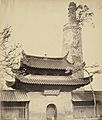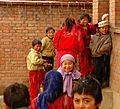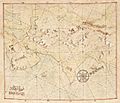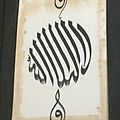Islam in China facts for kids
Muslims have lived in China for about 1,400 years, sharing their culture and traditions with Chinese society. You can find Muslim communities in every part of China. While the exact number of Muslims varies by different reports, some suggest they make up about 2% of China's total population. The Xinjiang region in northwest China is home to the largest number of Muslims.
Contents
A Long History of Islam in China
Islam first arrived in China during the 7th century, not long after the religion began. Traders and travelers from the Middle East brought their faith along the ancient Silk Road. This famous trade route connected China with many other parts of the world.
Early Arrivals and Growth
The first Muslims came to China during the Tang dynasty (618–907 AD). They were mainly merchants and diplomats. Over time, more Muslims settled in China, especially in cities like Guangzhou and Chang'an (now Xi'an). They built mosques and established communities.
Islam During Different Dynasties
During the Yuan dynasty (1271–1368 AD), when the Mongols ruled China, many Muslims were invited to work in the government and military. They played important roles in society. The Ming dynasty (1368–1644 AD) also saw a strong Muslim presence. A famous Chinese Muslim explorer named Zheng He led huge fleets of ships on voyages across the Indian Ocean.
Famous Muslim Figures
Zheng He (1371–1433 AD) was a highly respected admiral and explorer. He led seven major expeditions for the Ming Emperor, reaching places like Southeast Asia, India, Arabia, and East Africa. His voyages were much larger than those of European explorers who came later.
Muslim Communities in China Today
Today, there are several different ethnic groups in China who are Muslim. The two largest groups are the Hui and the Uyghurs.
The Hui People
The Hui people are one of China's 56 recognized ethnic groups. They are spread across almost all of China. The Hui speak Chinese, but they have their own unique culture that blends Chinese traditions with Islamic practices. Many Hui live in the Ningxia Hui Autonomous Region.
The Uyghur People
The Uyghurs mainly live in the Xinjiang Uyghur Autonomous Region in northwest China. They have their own language, which is related to Turkish, and a distinct culture. Xinjiang is known for its beautiful landscapes and its rich history along the Silk Road.
Other Muslim Groups
Besides the Hui and Uyghurs, there are other smaller Muslim ethnic groups in China. These include the Kazakhs, Kyrgyz, Tajiks, Uzbeks, Tatars, Salars, and Bonans. Each group has its own customs and traditions, adding to the diversity of Islam in China.
Islamic Culture and Architecture
Muslims in China have developed unique forms of Islamic art and architecture. Mosques often combine traditional Chinese building styles with Islamic designs.
Mosques and Calligraphy
Many mosques in China, like the Great Mosque of Xi'an, look like traditional Chinese temples from the outside. Inside, you'll find beautiful Islamic calligraphy, often written in a unique Chinese style called Sini. This style blends Arabic script with Chinese brush strokes.
Food and Festivals
Muslims in China follow halal dietary laws, meaning they eat only food that is allowed by Islamic rules. You can find halal restaurants and butcher shops in many cities. They also celebrate major Islamic festivals like Eid al-Fitr (which marks the end of Ramadan) and Eid al-Adha.
Images for kids
-
Chinese-style minaret of the Great Mosque of Xi'an, one of China's oldest mosques.
-
The tombs of Sa-Ke-Zu and Wu-Ko-Shun at Mount Lingshan, Quanzhou
-
Jinan Great Southern Mosque was completed during the reign of Temür Khan, Emperor Chengzong of Yuan.
-
Chinese Muslim explorer and admiral, Zheng He.
-
Depiction of a Central Asian Muslim from Altishahr, during the Qing dynasty
-
Capture of Dali, the capital of the Pingnan Sultanate in Yunnan, 1873
-
Pagoda composed of the Shahada and other Islamic prayers; section of an 1845 scroll
-
Eid al-Adha at Jiangwan Mosque, Shanghai
-
Muslim, Bonan children
-
99 names of Allah, in Chinese Sini
-
1939, Northwest China, Chinese Muslim fighters gather to fight against the Japanese
-
A halal butcher shop at Huxi Mosque in Shanghai
-
Sini-style Arabic calligraphy of the first Shahada (La 'ilāha 'illā Allāh) at the Great Mosque of Xi'an
-
A Chinese-Arabic-Xiaoerjing dictionary from the early days of the People's Republic of China
See also
 In Spanish: Islam en China para niños
In Spanish: Islam en China para niños
























